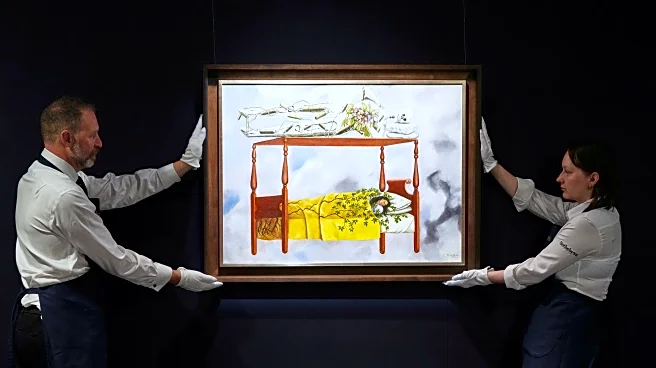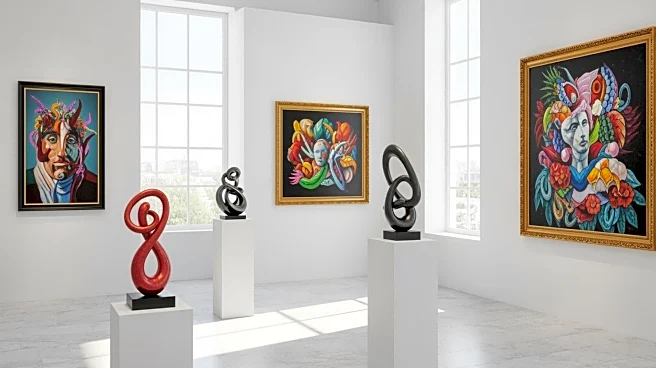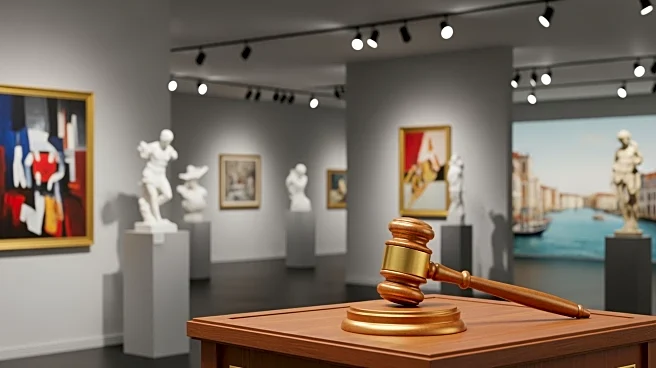What's Happening?
Cady Noland, a renowned artist known for her provocative works, has made a significant return to the art scene with a new exhibition at Gagosian's 555 West 24th Street space in New York. Noland, who gained
fame in the late 20th century for her works that explore the violent and outlaw aspects of American culture, had withdrawn from public view for over a decade. Her latest exhibition features 38 new works, most created in 2025, and has been met with enthusiasm from both collectors and younger audiences. The exhibition has successfully placed many pieces with major private collectors and institutions, indicating a strong market interest in her work.
Why It's Important?
Noland's return is significant as it highlights the evolving nature of her legacy and the continued relevance of her themes, such as gun control and wealth distribution, which resonate with younger generations. Her ability to control her narrative by selectively engaging with the art market appeals to young artists navigating their careers. The enthusiastic reception of her new works suggests a shift in the art world, where Noland's themes and approach are increasingly relevant. This development may influence the art market and inspire emerging artists to adopt similar strategies in managing their careers.
What's Next?
As Noland continues to produce new work, her reputation and influence in the art world are likely to grow. The success of her recent exhibition may lead to further shows and increased demand for her work. Art advisers suggest that Noland is filling a void left by major artists who have passed away, positioning her as a leading figure in contemporary art. Her ongoing engagement with themes of American culture and societal issues may continue to attract attention and provoke discussion among collectors, critics, and the public.
Beyond the Headlines
Noland's return raises questions about the role of artists in controlling their narratives and the impact of their work on societal issues. Her approach to art, which includes disclaimers and selective participation in exhibitions, challenges traditional norms and highlights the power dynamics within the art industry. This could lead to broader discussions about the responsibilities of artists and the ethical considerations of art curation and representation.












